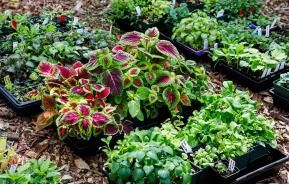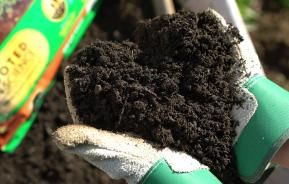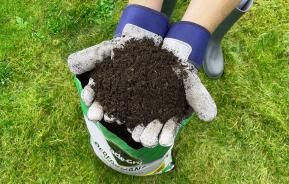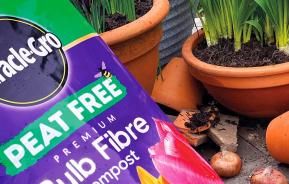When summer bedding plants come to an end, the garden can start to lose its colour and need brightening up. Autumn is the perfect time to plant winter bedding plants and spring bedding plants into their flowering positions to take over when the summer colour fades.
Brighten up your garden with bedding plants
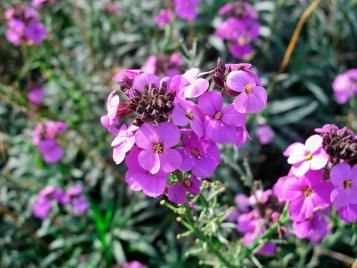
These bedding plants can provide several months of great garden colour and shouldn’t be missed. There may not be as much choice of spring bedding plants and winter bedding plants as in summer, but anything and everything will be very welcome to provide colour for the garden over the colder and darker days.
The following spring bedding plants will flower for weeks on end right through to the end of spring:
- Forget-me-not (Myosotis)
- Bedding daisies (Bellis perennis)
- Wallflowers (Erysimum)
The mainstay of displays from autumn right through to spring is the winter-flowering pansies and violas. Primulas, primroses and polyanthus, although spring flowering, will also flower intermittently during mild spells in winter and along with the pansies they make excellent choices for winter bedding plants.
You can also try dwarf indoor cyclamen (Cyclamen persicum); although not regarded as being hardy, they will usually last until at least the New Year in a sheltered location, even longer in mild areas.
Planting spring and winter bedding plants
Since plants grow very little in winter, make sure you start with good-sized plants, plant closely (most can be planted 15-23cm/6-9in apart) and use sufficient numbers to ensure a colourful display.
Because of the lack of growth in winter, the earlier you can plant out in autumn the better, so plants establish quickly and produce plenty of flower buds. This is particularly true for winter-flowering pansies.
And for extra flower power, underplant with a wide range of spring-flowering bulbs, such as daffodil, crocus, tulip, hyacinth and allium.
Containers, pots and hanging baskets
It makes sense to replant all your pots and hanging baskets using fresh compost such as Miracle-Gro Moisture Control Enriched Compost.
Positioning planted containers close to the house will help ensure a bright and cheerful outlook, even if it’s too miserable to actually venture outside. The house will also help provide some protection for winter bedding plants and the containers.
Other low-growing winter bedding plants for containers that can be used for extra colour in containers include:
- Winter-flowering heathers
- Vinca minor
- Ajuga (bugle)
- Heuchera
- Lamium (ornamental deadnettle)
- Ivy
You can include some dwarf/slow-growing shrubs such as Skimmia, Euonymus fortunei and Sarcococca (winter box, with highly scented winter flowers). As with beds and borders, underplant with dwarf spring-flowering bulbs, such as daffodil, crocus and tulip.
Container care for your spring and winter bedding plants
For best results, position containers where they will get as much light as possible during the winter months. Water the containers carefully in winter, taking care not to overwater by making sure you check the compost regularly, as it can soon dry out during mild weather.
Smaller plants are more susceptible to both overwatering and underwatering. It is not necessary to feed container plants during the winter, as fresh potting compost will have all the necessary nutrients. But start feeding with a liquid feed when growth starts in spring, we would suggest Miracle-Gro Pour & Feed Ready To Use Plant Food or Miracle-Gro LiquaFeed All Purpose Plant Food.
Raise pots and other containers off the ground on pot feet or bricks to help drainage and help prevent the conditions that can cause terracotta pots to crack.
Use bubble wrap around containers in very severe weather to reduce freezing damage to plant roots. Or make ‘duvets’ from thick bin liners filled with insulation material, such as shredded paper, polystyrene chips or even loft insulation material.





